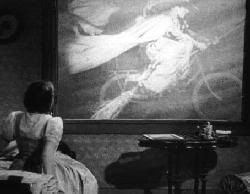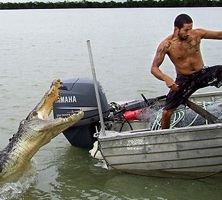I just wanted to add in a few more details about the convention in LA, now that I'm home, I've had the time to get some actual rest, and I've started to feel human again. ;)
The one thing I purchased during the convention was a device called a Jot-a-Dot.
Click here to read about them. Like the XO computer, Jot-a-Dots were designed for use in developing countries where people had need of a portable, sturdy item for writing braille. Also like the XO, I saw in the Jot-a-Dot a way to both support a worthy cause, and get a device that would be useful to me at the same time. The vendor from which I bought it said they were going to ship the order once they got back to their company's location -- I don't know if it's an online store only, or a brick-and-mortar store as well. Either way, I am sure they have plenty more orders to ship out than just mine, so if it takes a few days to arrive, so be it.
I can't remember if I posted this already, but one thing that I did was demonstrate my XO for the President Emeritus of Humanware. I showed it to him, and told him about how I originally envisioned it as being an option for face-to-face conversation between a sighted/hearing person who doesn't sign and a deaf-blind person. Humanware has moved forward with some improved tech of their own, compared to the setup that they were offering in 2006. At the AADB (American Association of the Deaf-Blind) convention in 2006, KC was using her BrailleNote device with a USB keyboard and a Palm Tungsten PDA that was communicating with the BrailleNote via bluetooth. But, I said, that involved three pieces of equipment. I thought that if an XO were employed somehow and could interface with the BrailleNote, that would only be TWO pieces of equipment since the XO has both its own keyboard and its own display, which is readable in sunlight. It's also spillproof and ruggedized enough to survive more than average wear-and-tear compared to a standard laptop. He was extremely interested in the device, and I could see the wheels turning as he processed the possibilities of using an XO as a form of accessible technology. So I figure I've presented my thoughts to exactly the right person -- someone who not only sees the XO's potential as I do, but has both the hardware and software professionals on hand who can make a solution work. If I ever post a link on this blog to a Humanware page that shows an XO (or a device that's a descendant of the XO) being used as accessible technology, you'll know that my ideas have started to bear fruit. :)
Saturday morning's workshop was on deaf-blind technology, and I found it fascinating. The first person who gave a talk was said President Emeritus of Humanware, and he presented the Deaf-Blind Communicator that was demoed at the Braille Institute the day before.
Click here for info.
Next was a representative from GW Micro, showing a braille notetaker called the Braille Sense.
Click here for information about it. It's the only braille device I've seen so far that has an LCD screen on it that shows, in print, what's being typed in braille. That's helpful for the situation where a blind person might be showing some information that's on the notetaker to someone who's sighted. I don't think it's got an option for a QWERTY keyboard yet, however, and not everyone can easily use braille keys. (KC used to use braille keys, but with a combination of carpal tunnel syndrome and arthritis in her hands, she prefers QWERTY keyboards now.)
The next presenter was from Freedom Scientific, and he gave a talk on their braille notetaker, the Pac Mate.
Click here for information. He didn't have a device on hand to demonstrate (as the other two speakers did), but he did give a rundown of the Pac Mate's features and contact information for people who wanted to learn more.
Then the person who was coordinating the workshop spoke about the Braillino.
Click here for information. This was a device that I'd neither seen nor heard of before, so I made sure to take some notes about its features. (Actually, I took notes about ALL the devices' features, even the ones I was relatively familiar with. Gabey loves her PDA, yes she does. :) )
The coordinator of the workshop said that next year, he was going to try and get a two-hour time slot to discuss deaf-blind technology, because one hour just wasn't enough time to discuss everything in any amount of detail. I think he's absolutely right. And if he does, bet your life that I'll be sitting in LA at this time next year -- look for me at that workshop, for sure. My only regret is that this was the ONLY workshop in the entire conference that focused specifically on the needs of deaf-blind users. I'm hoping that next year, not only will this specific workshop be longer, but perhaps there'll be other workshops covering additional deaf-blindness-related topics. Goodness knows there's an absolute dearth of material on so many aspects of deaf-blindness, from education to training interpreter/guides to you-name-it.
I have several photos on my cell phone that I need to post here, but I can't do that right now. I have a Phan Club meeting this evening, and there won't be time to sort through everything prior to that. Tonight (after the meeting) or tomorrow there'll be more time to check the photos and decide what to post.





















 "I began playing with it for a photo,'' Mr Mashiah said. "I was pointing at it when it suddenly jumped up at me - I didn't realise that crocs were so aggressive.''
"I began playing with it for a photo,'' Mr Mashiah said. "I was pointing at it when it suddenly jumped up at me - I didn't realise that crocs were so aggressive.''
